When it comes to your workforce, employee engagement is crucial to productivity. It’s also important to retain quality team members.
A study of employees discovered that three-quarters of employees report they aren’t looking for a new job, but they would be open if the right opportunity arose. Another study showed that nearly 80% of employees say they are likely to leave for another position because of a bad work environment.
Why Is Employee Engagement Important?
In today’s growing economy, businesses have shifted away from cost-cutting measures and are focusing more on growth and investment. Great leaders know that employee engagement is the fuel that can drive that success.
A highly engaged team maximises your investment in one of the biggest assets: your people. An engaged workforce is more motivated, more vested in team and company success, and perform at higher levels.
What Is Employee Engagement?
An engaged workforce is one where employees are committed to organisational goals and values. Teams are motivated to contribute to company success. They are working in an environment where they feel valued, respected, and understand how their role contributes to company success.
Great leaders know it is their job to create an environment that fosters this engagement.
How To Improve Employee Engagement
When you’re trying to figure out how to improve employee engagement, a study from the Harvard Business Review can help act as a guide. Companies were surveyed about what most drives employee engagement. Here are the top 8 factors presented in order of importance:
- Recognition is given for high performers
- Individuals have a clear understanding of how their job contributes to company strategy
- Senior leadership regularly updates and communicates strategy
- Business goals are communicated (and understood) company-wide
- Individual staff goals are aligned with corporate goals
- Performance reviews aligned with corporate goals
- Some (or all) staff pay was linked to corporate goal achievement
- Training and development were organised around corporate goals
There’s a theme here: Recognise performance, demonstrate how job functions tie back to corporate objectives, and communicate frequently.

Assess Your Team
Good leaders know that having the right people on the team if the key to growth. The right people help create the right environment for success. Top performers want to work with other top performers. Allowing poor performers to continue hurts not just the overall productivity, but it can also negatively impact the employee engagement levels for your top performers.
Take an objective look at your team and ask yourself if you have what you need. If you identify deficiencies or weaknesses, you need to act to help team members improve. In doing so, make sure you can demonstrate how improvement can help achieve company objectives.
When hiring, make sure you are probing for engagement levels. It’s difficult to transform non-engaged people to suddenly become engaged. Smart, motivated people will out-perform even more experienced people that are less engaged.
Communicate Company Goals
Communicate company goals consistently is one of the keys to high employee engagement. When team members know how specific tasks contribute to these overall goals, they become more vested in success. It helps to break down individual goals for team members and demonstrate how meeting these individual goals will lead to the achievement of corporate goals.
A good leadership technique is to tie some part of compensation, advancement, and team performance to these goals. It helps keep employees focused on what’s important to the company.
It’s important for employees to hear from you regularly. Good leaders communicate frequently.
How To Measure Employee Engagement
It’s important to take the team’s pulse on occasion and look beyond the daily performance. Here are some of the ways great leaders are using to measure employee engagement.
- Frequent, short surveys
- One-on-one meetings
- Annual reviews
- Exit interviews
- Townhall-style meetings
- Department meetings
One of the most effective ways you can measure employee engagement is by using a Net Promoter Score (NPS). Using just one question, you can gauge loyalty and assess the quality of your work environment.
Q: Would you be willing to recommend our company as a great place to work?
Asking this question in an anonymous survey can tell you a lot about how your team feels.
When you do regular employee assessments, it’s important to report the results back to the team. Choose a few places team members believe need to be improved and lay out a plan to improve them. You may want to involve the team in the solution by asking them how things can be improved and getting buy-in on key measurements.
You will demonstrate good leadership skills and improve engagement when you take on the issues the team feels are problems and set a course for improvement.
Employee Engagement Presents A Significant Opportunity
Great leadership knows an investment in employee engagement produces results. It’s not just a “feel good” thing. Companies that have highly engaged workforces report tangible results:
- 22% more profitable
- 21% more productive
- 10% higher customer satisfaction ratings
- 25%-65% lower turnover rates
- 28% less shrinkage
- 37% less absenteeism
- 41% fewer quality defects
- 48% fewer safety incidents
Yet even knowing how important employee engagement is to a company’s performance, here is a truly sobering statistic: Only 15% of employees overall worldwide are engaged in the workplace.
While disheartening, it also represents an opportunity for you. If you can create a more engaged and motivated team, it can provide a significant competitive advantage. Even a small increase in employee engagement can help move you forward and accelerate your growth. These are processes that can be learned as well with the right leadership training.





